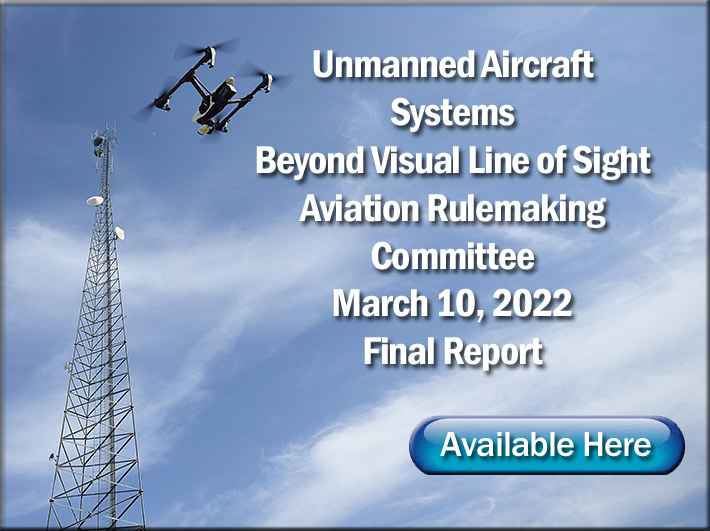The FAA’s UAS Beyond Visual Line of Sight (BVLOS) Aviation Rulemaking Committee (ARC) has published its final report with recommendations that will benefit contractors and towercos if they are enacted.
To fly BVLOS currently, operators must seek waivers or exemptions from the FAA, a lengthy and difficult process that is more likely not to be approved.
The Small UAV Coalition is urging the FAA to “expeditiously review the report and prioritize drafting a Notice of Proposed Rulemaking and any other regulatory updates that may be required to implement the ARC’s recommendations.”
The ARC report provides five categories of recommendations:
1. Establishing acceptable risk levels
The ARC recommends that the FAA set an acceptable level of risk (ALR) for UAS that is consistent across all types of operations being performed. The ARC envisions that this approach will allow the FAA to adopt a common and consistent set of regulations and guidance, giving operators the flexibility to meet the ALR through qualitative or quantitative methods, or a hybrid approach.
2. Determining right of way
The ARC recommends a series of modifications to the right of way rules in both Low Altitude Shielded Areas (within 100 feet of a structure or critical infrastructure as defined in 42 U.S.C. § 5195c) and in Low Altitude Non-Shielded Areas (below 400 feet) to accommodate drone operations. Specifically, the ARC recommends:
- To allow automatic means for see-and-avoid responsibility
- To give drones right of way in Shielded Areas
- To give drones right of way over crewed aircraft that are not equipped with ADS-B or TABS in Non-Shielded Low Altitude Areas
- To give crewed aircraft that are equipped with ADS-B or TABS (and broadcasting their position) right of way in Non-Shielded Low Altitude Areas
3. New pilot certificate training requirements
The ARC recommends an approach to operator qualification that would extend Part 107, Remote Pilot Certificate with Small UAS Rating, to cover topics associated with Extended Visual Line of Sight (EVLOS) and shielded UAS operations.
The recommendation creates a new Remote Pilot certificate rating to cover BVLOS operations beyond the scope of the extended Part 107 rating. The examination for both ratings would consist of a knowledge test on relevant areas, while practical training and qualifications would be tied to new Remote Air Carrier and Remote Operating certificates, which would be required for most commercial 1-to-many operations. The qualifications would be based on specific UA systems, Use Cases, and operational restrictions.
4. New BVLOS rule
The ARC recommends that the FAA establish a new BVLOS Rule which includes a process for qualification of UA and UAS, applicable to aircraft up to 800,000 ft-lb of kinetic energy (in accordance with the Operation Risk Matrix).
5. Regulations for third-party service providers
The ARC recommends that the FAA adopt a non-mandatory regulatory scheme for third party services to be used in support of UAS BVLOS operations. In addition to its recommendations, the ARC identified certain issues relevant to UAS BVLOS operations that are beyond this ARC’s scope, but which are identified in this report as considerations for future ARCs to address.
Similarly, the ARC also identified several issues that are beyond the FAA’s scope of authority. However, these recommendations are in the interest of providing a full framework of actions and policies to promote safe and widespread adoption of UAS BVLOS activities.
You can read about these and the basis of the ARC recommendations in the full report here.


















